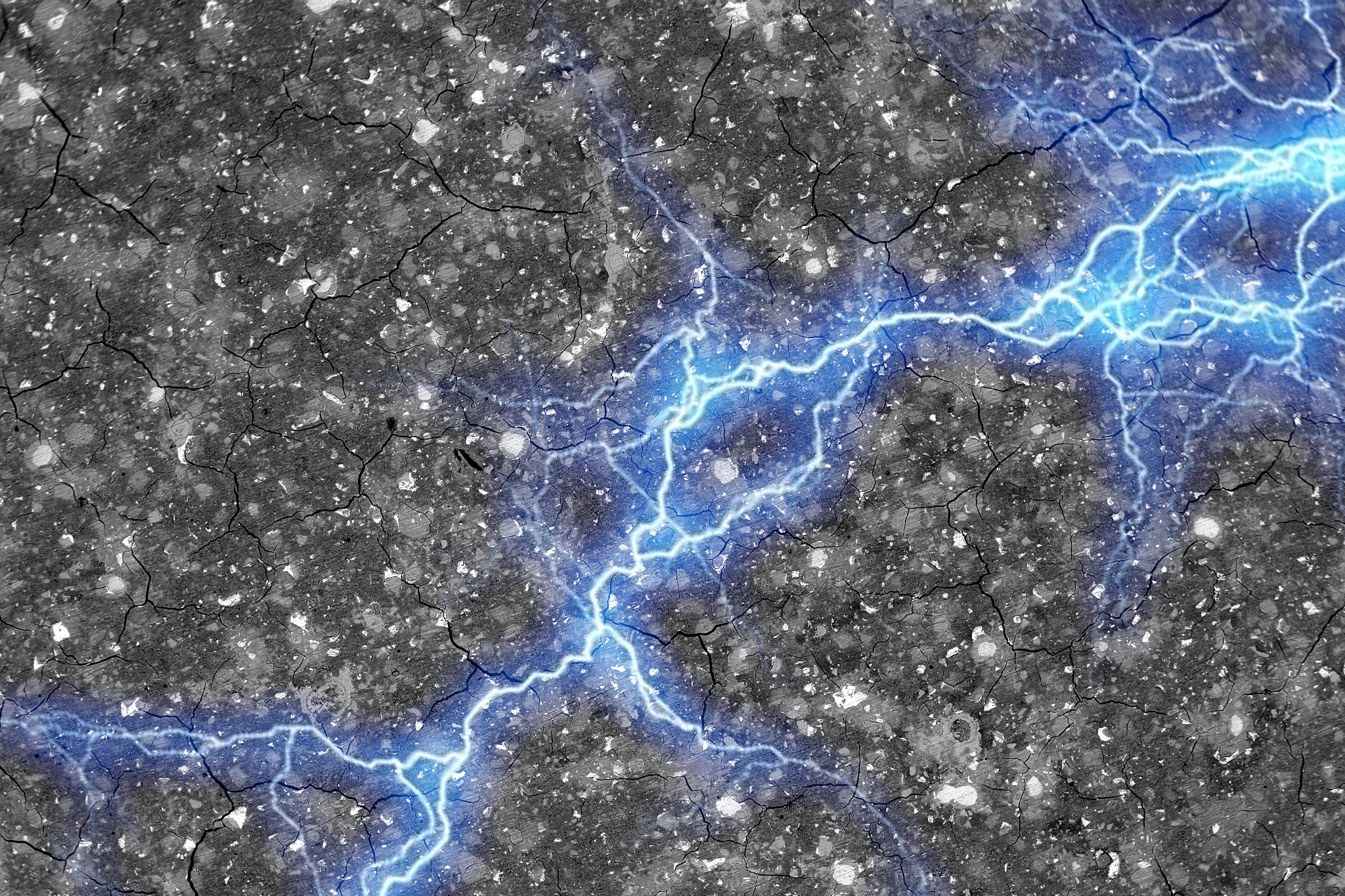Very very impressive. :)
- 18 Posts
- 267 Comments

 72·5 days ago
72·5 days agoI can tell a story of two vehicles.
A friend of mine had a self-built e-bike that went past my self-built e-car as if it were a road sign. :)
However, I can relay a word of caution: he used the lightest and best drone batteries (LiPo batteries) for it. They are incredibly good at burning, when helped a little to start the process. On one nasty day, he had to throw the flaming e-bike out of the garage door. Not much remained of the bike. Fortunately he had a smoke alarm and didn’t charge unattended.
As for my e-car - it drove some 12 000 more kilometers, but eventually the charger malfunctioned. It didn’t realize the battery was full and overcharged the cells. Needless to say, it was a cheap Chinese charger.
Instead of LiPo batteries, the car used LiFePO4 batteries. The safety valves opened and blew out electrolyte vapour, but nothing shorted and nothing caught fire. After another hour of cooking, maybe it would have, though.
I stopped the process, cooled down the cells and sorted them later by the level of damage. They lived a second life of 4 years as the auxiliary (outdoor) battery bank of my house, when it was freshly built. Some of them still hold charge, but in general, they’re about to retire.
Lesson 1: different chemistries have different risk levels. If you can’t or don’t wish to have battery monitoring, choose a safer battery chemistry.
Lesson 2: redundant charge termination systems were missing. It’s easy enough to install some. Always do it. Don’t count on the charger to finish charging. Install a secondary board and suitably rated MOSFET / relay to cut the connection if cells go unbalanced, if temperature rises, or if voltage rises beyond full charge.
And of course, don’t charge unattended. Sleeping == unattended.
 7·9 days ago
7·9 days agoDisclaimer: I’m not American.
My plan is to cooperate with a local non-profit and start supplying dirt cheap drones to Ukrainians, since they’ll be needing more if ¹ US assistance gets cut by Trump. The cooperation has actually started since we didn’t wait for things to hit the fan. I hope we’ll pick up speed. Product development is terribly, nerve-stretchingly slow.
¹ more likely “when”, not “if”
For some reason, I suspect that many people have made a similar decision in Europe recently. Visited a civil engineering company recently. Saw engineers fitting a precise replica of a Browning 12.7 mm machine gun into something. Didn’t ask what it was - had no need to know - obviously some robotic system. It’s kind of sad that we’re undergoing a rush of militarization, but when the biggest member of an alliance starts to go haywire and there’s a conquering dictatorship next door, it’s pretty much the only thing that can be done to change the outcome.

 1·9 days ago
1·9 days agoNow it’s also loading for me. Thanks for trying. :)

 2·10 days ago
2·10 days agoStrange, I can’t get the link to open. If I just click the link, (Firefox on Linux) it says “SSL_ERROR_INTERNAL_ERROR_ALERT”. However, when I revert to http:// instead of https://, it loads a page saying:
Invalid url! /t/K2Wj4
Can anyone else tell - does it open for you?
Why the water isn’t killing the fire?
Could be anything from sodium to calcium carbide to fluorine. :) Sodium makes hydrogen with water, carbide makes acetylene with water, and flouride just oxidizes water by grabbing hydrogen away from oxygen.
If the character’s plan is to try fascism next, I think they’re into fairly agressive substances. :P

 1·11 days ago
1·11 days agoThat was a long story, and I was a fool.
I bought a car that had driven an incredibly short mileage, hoping to restore the battery to working order. Being unfamiliar with it, I was unable to find the fault at first, so I bought a second-hand battery separately to test the car. I found the problem, fixed the car, but now had a batttery with a few dead cells left over. After fruitless attempts to find another person in need of many cells, I decided to use them for my house. :)

While the article takes no solid position about the benefits and harms of alleviating global warming with solar geoengineering, it does correctly point out that discussion and governance of the subject is lacking.
Some hypothetical examples:
Case A:
- a coastal country experiences increased storm surges, a large percentage of its population stands at risk, it perceives climate change as an existential risk
- this country decides to engage in solar geoengieering to cool the planet, however its neigbours on higher ground don’t perceive a risk from warming, instead they fear that wind patterns could change and deprive them of rainfall
- they accuse each other of violating each other’s rights, start a trade dispute and eventually make war
Case B:
- lots of people are convinced that efforts to control climate change by reducing carbon output have failed
- they decide to go for solar geoengineering, but the predicted impact on food production is -10%
- this affects the poorest of people most adversely, but there is no compensation mechanism
- cooling the planet succeeds, but results in outbreaks of famine
Case C:
- lots of people are convinced that efforts to reduce emissions have failed
- solar geoengineering allows to cool the planet to pre-industrial levels
- does incentive to reduce emissions disappear now?
- if the cooling effect is terminated, extremely fast warming may now happen
Myself, I perceive this as a last resort. If reasonable measures don’t save the day, this is one of the less reasonable measures that could buy time. I would like people to research this, so that capability would exist. But I would not be easily convinced of the necessity of taking action, as long as alternatives remain.

 3·17 days ago
3·17 days agoBack to farming kale, then. :)

So it’s mainly asthma that people develop due to exposure to nitrogen oxide - and treating all the patients puts a considerable burden on society.
Unrelatedly, as a side note, I got curious about Portuguese cooking - for some reason the graphs show that cooking food in Portugal requires a three times higher percentage (30% as opposed to 10%) of overall energy consumption, implying either lower energy use for everything else, or higher energy use for cooking.
I wonder if there’s some secret sauce that is only made in Portugal and which is extremely energy-intensive? Or just a case of broken statistics…
I mean sure, if you’re at such extreme latitudes that you have months of total darkness, then solar will have a problem there. Maybe small modular reactors make sense for those niche applications.
Currently, solar still makes economic sense, but from April to October. Lots of it was built rather fast, now the adoption is slowing since the grid can’t accept it everywhere.
Consequently, summer is when oil shale miners rest and prepare for the next season.
Since the goal is to get rid of mining oil shale, big plans exist to install a lot of wind power. Sadly, this has gone embarrassingly slow, and it cannot cover winter consumption, and there is not enough storage.
As a result, some companies and building out storage, but only enough to last a few hours.
…and in the next country southwards, there is a huge gas reservoir that could accept methane, enough to last the whole winter, but nobody has a good enough handle on methanation to renewably produce a considerable quantity and store it there. :o
With regard to reactors, it seems likely that getting one would take 10 years and the local country here doesn’t even have legislation built out for nuclear power. They’re drafting it. Starting from zero is quite slow.
That’s a pretty big gap to cover with spamming more panels. I would venture to guess: this approach would work up to latitude 45 or so.
https://www.engineeringtoolbox.com/surface-solar-radiation-d_1213.html
Where I live, in midwinter, the day is 6 hours long. Over here, wind turns more heads than solar. But yes, solar is riduculously quick to install.

 11·25 days ago
11·25 days agoMachinery comes is varying width. I would guess a farmer needs to decide at some point - is the priority using a 10-meter wide tool, or is it OK to settle with a 6-meter tool, or even a smaller one.
Basing on that, they’ll decide what the clearance between rows of panels should be. From an energy installation viewpoint, the shadow of one row should not cover another row during normal operating conditions. Assuming sun at 30 degrees elevation (“September on latitude 60”), the shadow of a fence that’s 1.2 meters tall will be about 1.75 * 1.2 = 2.1 m long. So from an energy generation viewpoint, one can pack things more densely than makes sense for farming.
Since 2021, nearly 4 full years, the world has closed less than 1% of active coal power plants.
Closing will come later, when alternatives are widely available. What renewable energy does currently - at least here - is forcing those plants temporarily out of the market, especially during summer months and windy weather. The plants will exist and stay ready in case of need for well over a decade, maybe even two - but they will start up ever more rarely.
Technically, the deal is: we don’t have seasonal energy storage. Short term storage is being built - enough to stabilize the grid for a cold windless hour, then a day, then a week… that’s about as far as one can go with batteries and pumped hydro.
To really get the goods one has to add seasonal storage or on-demand nuclear generation. The bad news is that technologies for seasonal storage aren’t fully mature yet, while nuclear is expensive and slow to build. There’s electrolysis and methanation, there’s iron reduction, there are flow batteries of various sorts, there’s seasonal thermal storage already (a quarter step in the right direction)…
…but getting the mixture right takes time. Instead of looking at the number of closed plants, one should look at the sum of emissions. To remain hopeful, the sum should stop growing very soon.
Also, costing €623,000 over three years sounds rather expensive for just 100m
It’s hugely expensive, but I expect most of the cost to be in the wagon that lays panels down and picks them up - and could hopefully service a big stretch of railway (if it works). That kind of systems will cost a pretty big penny.
I doubt if this project will “fly”, however. A totally horizontal solar panel at ground level is a far cry from producing energy efficiently.

 8·1 month ago
8·1 month ago- How does it look under snow? :)
It is my personal opinion that a crossing is better emphasized with light from above. Snow cannot cover light.
As for bumps… there are bumps that work right (harm the suspension at speeds above the limit), and then there are bumps that harm the suspension at any speed. Road builders over here cannot seem to get them consistently right.

Also relevant: “Always shoot the messenger first.” :)
If news unsettles a person, and there’s a cognitive dissonance upon processing their world model (“everything OK with climate”) and sensory input (“another big freaking hurricane”) then if the person isn’t a model of rational thought and already has a fad for conspiracies…
…one might find it easier to add another conspiracy theory to one’s collection, as opposed to harder steps like refreshing one’s model of how the world functions. :o

 2·1 month ago
2·1 month agoThat’s quite understandable.
On related notes, my first disassembly of an EV battery pack was very slow and careful, and the surface, boots, gloves and tools really carefully considered. Of course, EV batteries have those safety jumpers which split the pack in two, but even the halves are dangerous enough to worry.

 4·1 month ago
4·1 month agoIndeed, I have nothing here that would draw 35 kilowatts. :) If I weld, the maximum is 4 kW, if I charge my car, the maximum is about 3.6 kW. By the way, I’ve observed that most of time, the MIEV cruises at around 10 kW - accelerating is a whole different matter of course. :) If I get a bit more, I’ll be happy, but I don’t expect a lot more.
I have no power grid here. Maybe next autumn, but I only asked them to build a laughably small connection of 3 x 6 A, to act as a backup in case my systems are catastrophically broken) so no grid tie. Since it’s a really curious location (no official road either) I wonder if the grid operator actually manages to build it in one year. :)
As for inverters, my setup isn’t new or shiny - there’s a legacy DC-AC (poor choice of brand name from some Taiwanese maker, even I can’t find their website because their name is so generic) 24 V 5 KW inverter. It produces modified sine wave, was too expensive, and the first one that I got developed a fault and was replaced. The replacement has been running my house for the past 5 years. It will retire when I manage to move over to a 48V system voltage.
…and its replacement is a somewhat newer Maximum Solar PIP-4048MS (no longer produced, but they make similar ones). It’s actually less powerful (only 4 kW) but produces a pure sine wave and I bought it used for a really good price.
Although the new(er) inverter can act as a charger (drawing power either from solar or a generator or a power grid) and likely it soon will, I have 3 separate chargers, each for a different panel array. All of them are Maximum Solar PCM60X. I mostly chose them because they have passive cooling and they’ve been working for several years.




















It would not exclude clear differentiation, however. :)
Just like a chatbot posting on social media can add a message footer “this content was posted by a robot” to a fluent and human-like message, a humanoid robot, while having human form, can clearly identify itself as a robot.
Personally, I think such a design requirement is higly reasonable on social media (as a barrier or action threshold against automated mass manipulation) but probably also in real life, if a day comes when human-like robots are abundant.